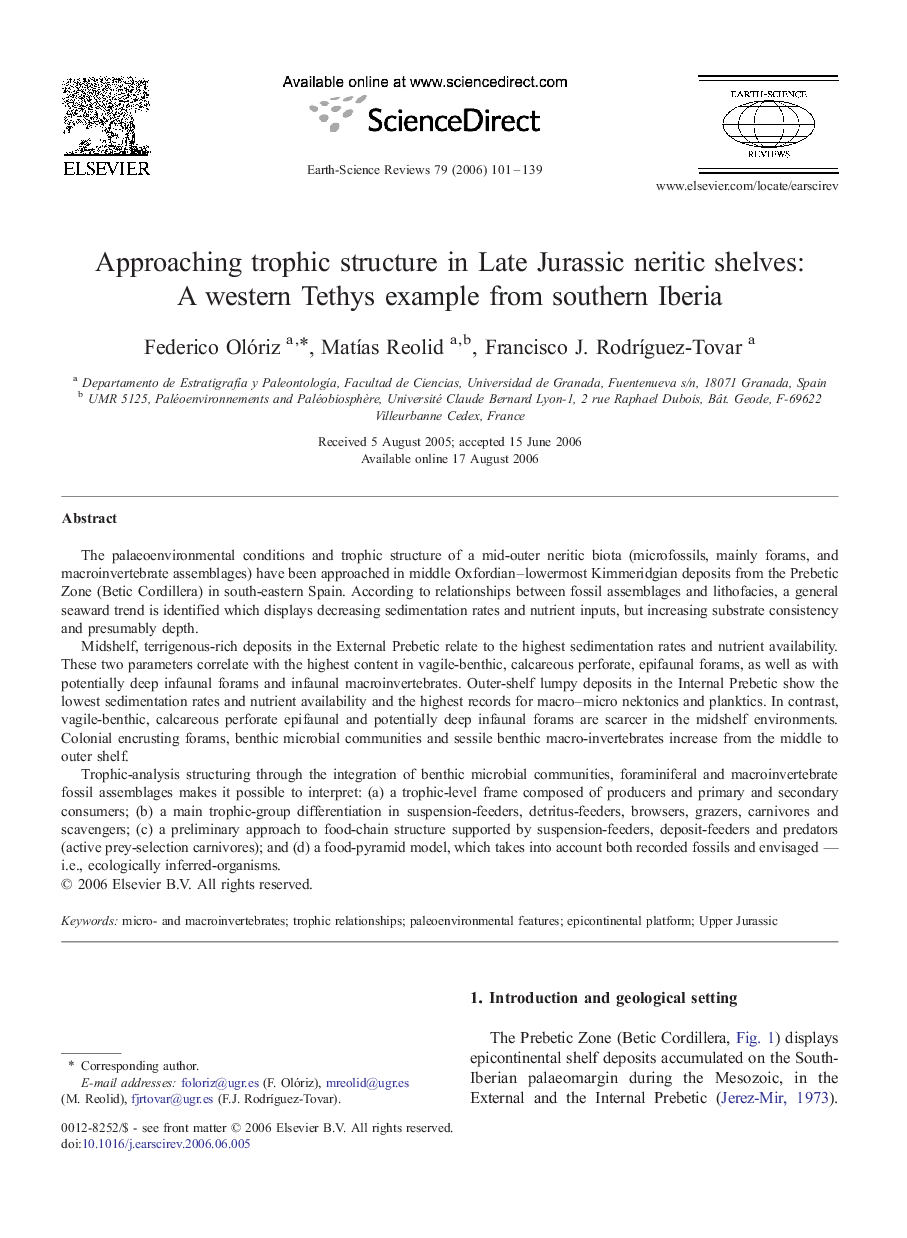| کد مقاله | کد نشریه | سال انتشار | مقاله انگلیسی | نسخه تمام متن |
|---|---|---|---|---|
| 4726441 | 1640051 | 2006 | 39 صفحه PDF | دانلود رایگان |

The palaeoenvironmental conditions and trophic structure of a mid-outer neritic biota (microfossils, mainly forams, and macroinvertebrate assemblages) have been approached in middle Oxfordian–lowermost Kimmeridgian deposits from the Prebetic Zone (Betic Cordillera) in south-eastern Spain. According to relationships between fossil assemblages and lithofacies, a general seaward trend is identified which displays decreasing sedimentation rates and nutrient inputs, but increasing substrate consistency and presumably depth.Midshelf, terrigenous-rich deposits in the External Prebetic relate to the highest sedimentation rates and nutrient availability. These two parameters correlate with the highest content in vagile-benthic, calcareous perforate, epifaunal forams, as well as with potentially deep infaunal forams and infaunal macroinvertebrates. Outer-shelf lumpy deposits in the Internal Prebetic show the lowest sedimentation rates and nutrient availability and the highest records for macro–micro nektonics and planktics. In contrast, vagile-benthic, calcareous perforate epifaunal and potentially deep infaunal forams are scarcer in the midshelf environments. Colonial encrusting forams, benthic microbial communities and sessile benthic macro-invertebrates increase from the middle to outer shelf.Trophic-analysis structuring through the integration of benthic microbial communities, foraminiferal and macroinvertebrate fossil assemblages makes it possible to interpret: (a) a trophic-level frame composed of producers and primary and secondary consumers; (b) a main trophic-group differentiation in suspension-feeders, detritus-feeders, browsers, grazers, carnivores and scavengers; (c) a preliminary approach to food-chain structure supported by suspension-feeders, deposit-feeders and predators (active prey-selection carnivores); and (d) a food-pyramid model, which takes into account both recorded fossils and envisaged —i.e., ecologically inferred-organisms.
Journal: Earth-Science Reviews - Volume 79, Issues 1–2, November 2006, Pages 101–139